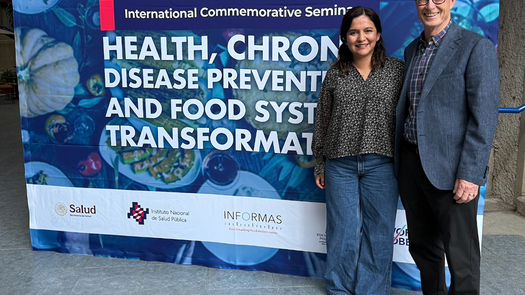November 25, 2025

In a world where unhealthy diets have a direct impact on overweight, obesity and malnutrition, urgent action is needed to address the rising threat of noncommunicable diseases (NCDs). The Global Health Advocacy Incubator (GHAI) and its partners the O’Neill Institute Global Center for Legal Innovation on Food Environments, Resolve to Save Lives and Vital Strategies are proud to introduce a new position paper titled: Nutrient Profile Models: A valuable tool for developing healthy food policies, which serves as a comprehensive guide for advocates and decision-makers, providing best practices to transform global food policies based upon emerging evidence, to better protect the right to food for all.
Unhealthy diets are major contributors to NCDs, leading to premature morbidity and mortality worldwide. This paper emphasizes the need for comprehensive strategies—such as through strong Nutrient Profile Models (NPMs)—to address diet-related NCDs' preventable risk factors. This document presents best practices based on scientific evidence, free from conflicts of interest-and lessons learned from several countries that have implemented food policies.
According to the World Health Organization (WHO), the purpose of NPMs is clear: to classify or categorize food products based on their nutritional content with a focus on preventing diseases and promoting health. Why should we care about NPMs? They help define what nutrients and ingredients should be limited in standard diets.
They establish thresholds of nutrients of concern, including all non-sugar sweeteners and other additives that are harmful to health when consumed in excess. Sugar, sodium, saturated fat, trans fat and non-sugar sweeteners are the key culprits, which are also known as ingredients and nutrients of concern. Ingredients and nutrients of concern can have profound impacts on an individual’s health, and therefore, it is important that consumers receive clear information about the food they are purchasing and consuming so that people can make the right choices for themselves. In this paper, governments are urged to take immediate action to reduce UPP consumption and promote access to healthy and nutritious food that international human rights law compels states to act. The right to health extends beyond health care to include underlying determinants such as food and nutrition. The right to adequate food entitles every individual to physical and economic access to nutritionally adequate and culturally acceptable food. Governments are called upon to take concrete measures to transform unhealthy environments. This involves regulating the food and beverage industry, providing transparent information to empower consumers, and making healthier alternatives more affordable and accessible.
GHAI and its partners hope this Nutrient Profile Model paper will serve as a tool for civil society organizations to use in their advocacy efforts. The paper can be used as a guide by policymakers for reference when drafting model legislation, shared with technical teams at Ministries of Health to help push for policy change and/or to evaluate proposed Nutrient Profile Models. By implementing these recommendations, we can work towards creating healthier environments and safeguarding the right to food for all.
To read the position paper, click here.



